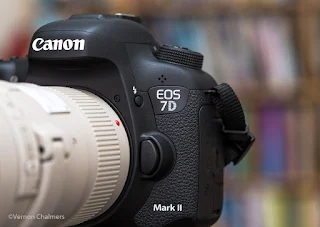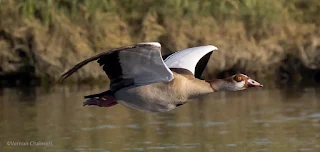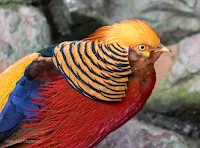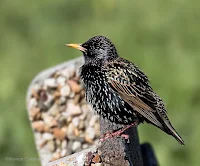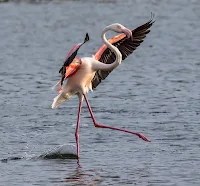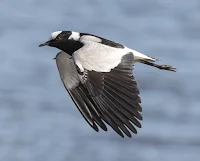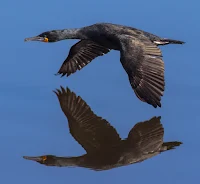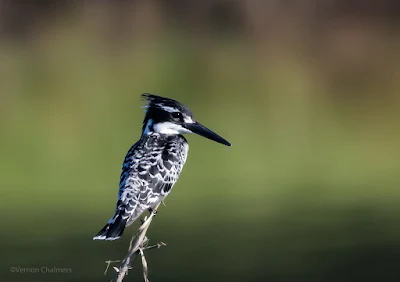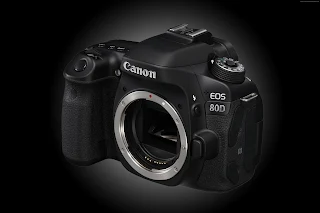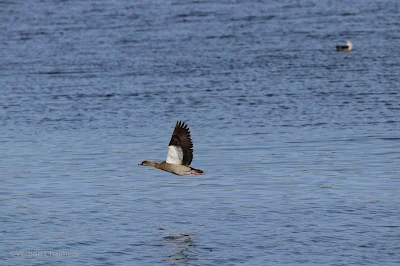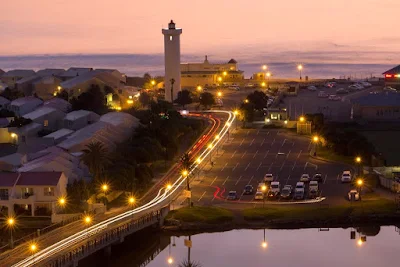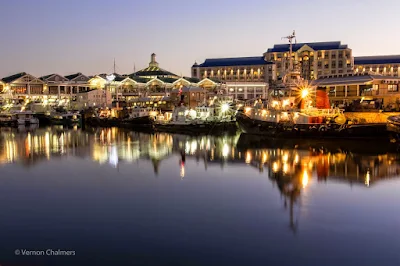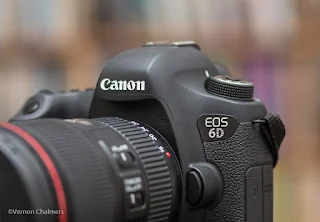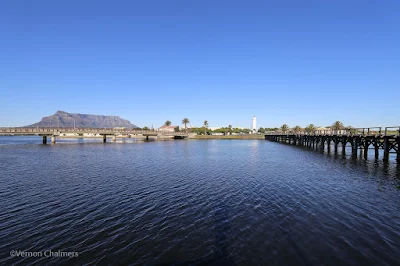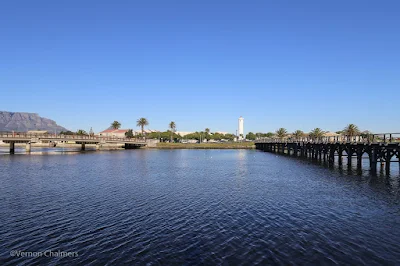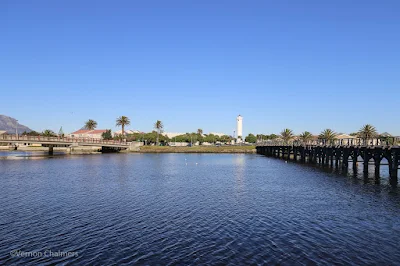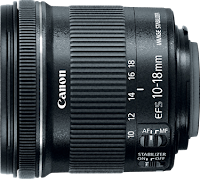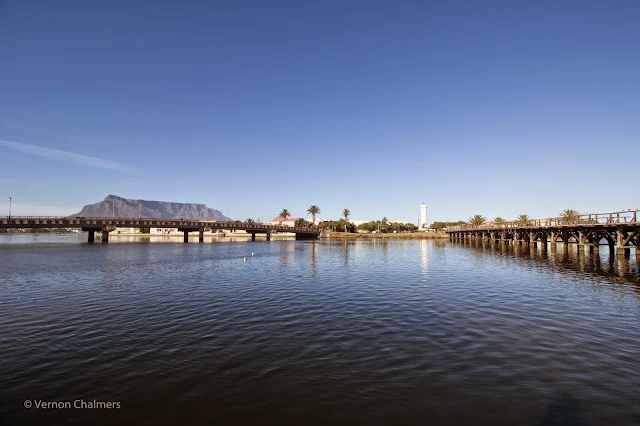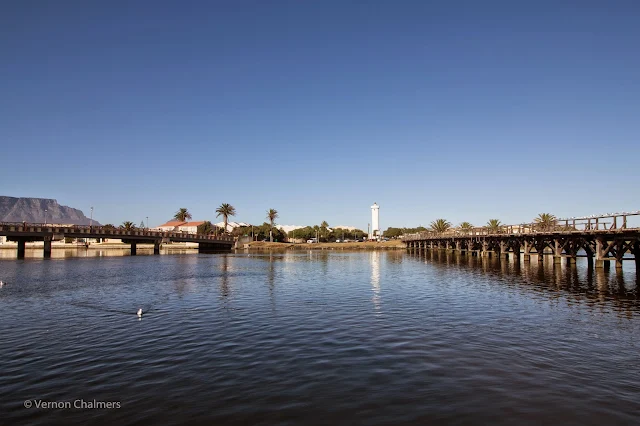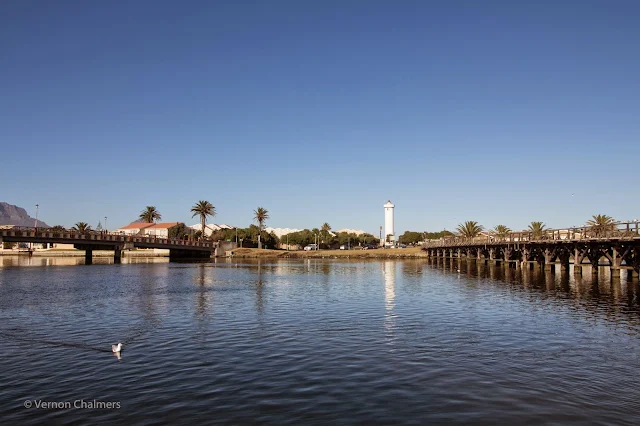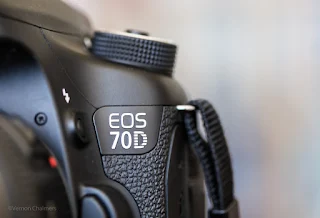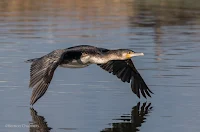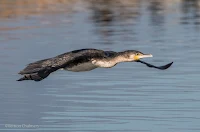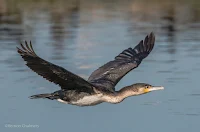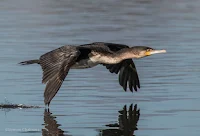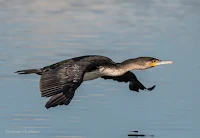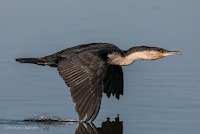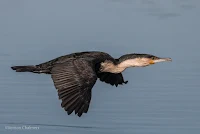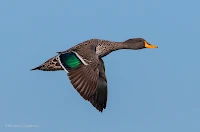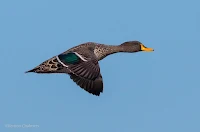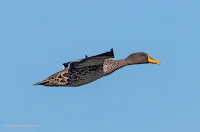New: Canon EOS 7D Mark II Long-Term Use Experience Read
New: Canon EOS 7D Mark II Birds In Flight Gallery Page
New: Canon EOS 80D First Impressions View
After receiving word from Canon South Africa via a local retailer that they have a Canon EOS 7D Mark II and EF 100-400mm f/4.5-5.6L IS II USM lens for me to test with my Birds in Flight photography I was naturally excited for two main reasons; to take this much anticipated EOS body and lens combination through its paces and to gain valuable hands-on experience with Canon's latest APS-C flagship EOS body ito Autofocus (AF) speed, all-round functionality paired with the EF 100-400mm f4.5-5.6L IS II USM lens.
Test Period: During July 2015
Some test criteria and the Cape Town weather
With no real time for any pre-planning I decided to only shoot with the EOS 7D Mark II / EF 100-400mm f/4.5-5.6L IS II USM lens for a week without any side-by-side comparisons with my own EOS system at the time (2x EOS 70D's with EF 400mm f/5.6L USM and EF 70-300mm f/4-5.5L IS USM lenses). Most of the test shoots were carried out during some rather dismal Cape Town winter weather conditions.
Canon EOS 7D Mark II Update: During October 2015 I started facilitating Birds in Flight Workshops in Cape Town and purchased my own Canon EOS 7D Mark II body for studying and getting up to speed with the more advanced 65-point Autofocus system. This body is currently paired with the Canon EF 400mm f/5.6L USM lens (predominantly for AF testing / capturing Birds In Flight Photography - Woodbridge Island).
Canon EOS 7D Mark II brief specifications
The body and lens combination feels rugged and solid in-hand and is ergonomically well designed in terms of comfortable grip, LCD monitor(s), button / control layout and general usability (similar to the EOS 7D) - and not too heavy for hand holding action photography.
I mostly shoot handheld and for a few hours at a time. I did exactly the same with the Canon EOS 7D Mark II and although a bit heavier than the EOS 70D (and lens pairing combinations).
I experienced no real weight disadvantage or handling issues (the weight distribution between body and lens is well-balanced with a combined weight of +- 2.5kg).
My stand-out features / applications of the Canon EOS 7D Mark II
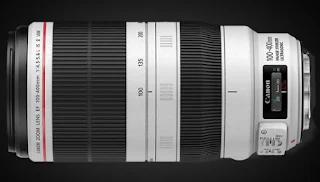 The Canon EF 100-400mm f/4.5-5.6L IS II USM lens is Canon's second generation EF 100-400mm L IS USM focal length lens. Like all other Canon L Series lenses it is very well built and a pleasure to hold and shoot with. I've never used the older model, but shoot regularly with the EF 400mm f/5.6L USM and the EF 70-300mm f/4-5.6L IS USM lenses.
The Canon EF 100-400mm f/4.5-5.6L IS II USM lens is Canon's second generation EF 100-400mm L IS USM focal length lens. Like all other Canon L Series lenses it is very well built and a pleasure to hold and shoot with. I've never used the older model, but shoot regularly with the EF 400mm f/5.6L USM and the EF 70-300mm f/4-5.6L IS USM lenses.
I've used the lens in non-IS mode (when using fast shutter speeds of 1/2000s) and IS mode (for non-action) across the aperture and zoom range and is satisfied with the IS implementation and overall stability.
Canon EF 100-400mm f/4.5-5.6L IS II USM lens brief specifications
On many forums and test charts the general consensus is that the Mark II lens is definitely sharper than the previous lens and the EF 400mm f/5.6L USM lens. After my week of shooting I can concur without any doubt that this lens is at least as sharp as my own EF 400mm f/5.6L USM lens.
Shooting Bird in Flight at 10 frames per second
New: Canon EOS 7D Mark II Birds In Flight Gallery Page
New: Canon EOS 80D First Impressions View
After receiving word from Canon South Africa via a local retailer that they have a Canon EOS 7D Mark II and EF 100-400mm f/4.5-5.6L IS II USM lens for me to test with my Birds in Flight photography I was naturally excited for two main reasons; to take this much anticipated EOS body and lens combination through its paces and to gain valuable hands-on experience with Canon's latest APS-C flagship EOS body ito Autofocus (AF) speed, all-round functionality paired with the EF 100-400mm f4.5-5.6L IS II USM lens.
Test Period: During July 2015
Some test criteria and the Cape Town weather
With no real time for any pre-planning I decided to only shoot with the EOS 7D Mark II / EF 100-400mm f/4.5-5.6L IS II USM lens for a week without any side-by-side comparisons with my own EOS system at the time (2x EOS 70D's with EF 400mm f/5.6L USM and EF 70-300mm f/4-5.5L IS USM lenses). Most of the test shoots were carried out during some rather dismal Cape Town winter weather conditions.
Canon EOS 7D Mark II Update: During October 2015 I started facilitating Birds in Flight Workshops in Cape Town and purchased my own Canon EOS 7D Mark II body for studying and getting up to speed with the more advanced 65-point Autofocus system. This body is currently paired with the Canon EF 400mm f/5.6L USM lens (predominantly for AF testing / capturing Birds In Flight Photography - Woodbridge Island).
Canon EOS 7D Mark II brief specifications
- 20.2 Megapixel CMOS (APS-C) sensor
- Dual DIGIC 6 Image Processors
- ISO 100-16000 (51200 expansion)
- High speed continuous shooting up to 10 fps
- 65-point all cross-type AF system
- EV -3 sensitivity (center point)
- Dual Pixel CMOS AF 3.0-inch Clear View II LCD monitor
- Built-in GPS
- Weight 910g
I mostly shoot handheld and for a few hours at a time. I did exactly the same with the Canon EOS 7D Mark II and although a bit heavier than the EOS 70D (and lens pairing combinations).
I experienced no real weight disadvantage or handling issues (the weight distribution between body and lens is well-balanced with a combined weight of +- 2.5kg).
My stand-out features / applications of the Canon EOS 7D Mark II
- Continuous Shooting Speed / AF System: 10 frames per second (fps) continuous shooting / burst mode and the newly developed 65-point (all cross-type) Dual Pixel AF system. I used the Wide Zone AF option (25 cross-type AF points for Birds in Flight). All together there are 7 AF modes: Spot AF, Single point, 4 point Expansion, 8 point Expansion, Zone AF, Wide Zone AF, Auto AF.
- High ISO Capabilities: I was very impressed with ISO's up to 3200. Due to the poor / variable lighting conditions I mostly used Auto-ISO (100 - 6400) and applied only some slight noise reduction in post-processing (Lightroom 5.7).
- Menu System / LCD displays: The camera's colour-coded menu system is designed around the now familiar Canon menu-interface, but with many more options to cater for advanced AF settings, built-in GPS and various other customization options and settings). The 3 inch LCD is non-articulated and non-touch, but is bright, large and is complemented well by the top LCD panel area which is home to the various exposure indicators and quick WB / AF / ISO settings.
- Dual Memory Card Slots: Support for 1x CF (UDMA Mode 7) and 1x SD/SDHC/SDXC (UHS-I) memory card. I only used the SD card slot with a high-speed Lexar Professional 1000x (150MB/s) and Sandisk Extreme Plus 95MB/s SD card. I was more than satisfied with the burst / buffer writing speed to both cards.
- Battery and Charger: The supplied LP-E6N battery was good for 800+ shots in burst mode (GPS off) on a single charge. I used my own compatible Canon EOS 70D LC-E6 charger with no issues. The supplied LP-E6N Canon battery is compatible with EOS 60D / EOS 70D / EOS 7D / EOS 6D / EOS 5Ds / EOS 5Ds R / EOS 5D Mark II / EOS 5D Mark III camera bodies. (Also the Canon EOS Mark IV / EOS 6D Mark II / EOS 80D)
 The Canon EF 100-400mm f/4.5-5.6L IS II USM lens is Canon's second generation EF 100-400mm L IS USM focal length lens. Like all other Canon L Series lenses it is very well built and a pleasure to hold and shoot with. I've never used the older model, but shoot regularly with the EF 400mm f/5.6L USM and the EF 70-300mm f/4-5.6L IS USM lenses.
The Canon EF 100-400mm f/4.5-5.6L IS II USM lens is Canon's second generation EF 100-400mm L IS USM focal length lens. Like all other Canon L Series lenses it is very well built and a pleasure to hold and shoot with. I've never used the older model, but shoot regularly with the EF 400mm f/5.6L USM and the EF 70-300mm f/4-5.6L IS USM lenses. I've used the lens in non-IS mode (when using fast shutter speeds of 1/2000s) and IS mode (for non-action) across the aperture and zoom range and is satisfied with the IS implementation and overall stability.
Canon EF 100-400mm f/4.5-5.6L IS II USM lens brief specifications
- Focal Length & Maximum Aperture: 100-400mm 1:4.5-5.6
- Lens Construction: 21 elements in 16 groups
- Focus Adjustment: Inner focus system, USM
- Closest Focussing distance: 3.2 ft. / 0.98m
- Filter size: 77mm
- Weight: 1640g (with tripod mount)
On many forums and test charts the general consensus is that the Mark II lens is definitely sharper than the previous lens and the EF 400mm f/5.6L USM lens. After my week of shooting I can concur without any doubt that this lens is at least as sharp as my own EF 400mm f/5.6L USM lens.
Shooting Bird in Flight at 10 frames per second
I expected a lot from this high-performance body / lens combination and most of this was confirmed and met during the first early morning walk along Woodbridge Island capturing some fast-flying Cormorants, Egyptian geese and a few other local species. In overcast conditions I used my go-to EOS 70D RAW / Manual Mode settings: Auto ISO / f/6.3 / 1/2000s Multi-Shot (10 fps) / AI Servo AF mode and specific to the EOS 7D Mark II's AF: Case 2 / Wide Zone AF. (I've done a reset of the camera before the first shoot so all other settings were at default values).
The body / lens combo locked focus onto the oncoming birds fairly quickly with the 10 fps capability, providing the fastest Canon EOS burst rate second to only the Canon EOS 1D X (14 fps). I generally shoot in 3 or 4 short bursts with the EOS 70D and would get 2 or 3 acceptable / sharp images per burst. With the EOS 7D Mark II I achieved 5 to 6 acceptable / sharp images per similar burst duration. In no time I filled the accompanied 16GB Lexar Professional 1000x (150MB/s) SD card and carried on using my own 32GB Sandisk Extreme Plus 95MB/s SD Card. Buffer write speed from the Lexar to the Sandisk SD card was about the same.
I didn't have the time to experiment too much with the various AF mode combinations, but most shots were in focus (up to the wing tips) and I was satisfied with the overall sharpness, colour and image quality.
Final thoughts
The Canon EOS 7D Mark II in my opinion lives up to its new Canon APS-C flagship status (and expectations) after replacing the Canon EOS 7D in September 2014. Embedded in a robust dust and weather-sealed magnesium alloy body the newly developed 65-point AF system compares well with the 61-point AF system used in both the Canon EOS 5D Mark III and EOS 1D X. The super fast 10 fps and advanced settings / configurations should meet the AF / fps speed requirements of the most demanding sport and wildlife / Birds in Flight enthusiasts. The EOS 7D Mark II is compatible with the full range of Canon's EF-S and EF consumer and professional lenses making it more than capable for all other photography genres as well.
Canon EOS 7D Mark II Article / Images © Vernon Chalmers
Word Of Birds Hout Bay Cape Town
The body / lens combo locked focus onto the oncoming birds fairly quickly with the 10 fps capability, providing the fastest Canon EOS burst rate second to only the Canon EOS 1D X (14 fps). I generally shoot in 3 or 4 short bursts with the EOS 70D and would get 2 or 3 acceptable / sharp images per burst. With the EOS 7D Mark II I achieved 5 to 6 acceptable / sharp images per similar burst duration. In no time I filled the accompanied 16GB Lexar Professional 1000x (150MB/s) SD card and carried on using my own 32GB Sandisk Extreme Plus 95MB/s SD Card. Buffer write speed from the Lexar to the Sandisk SD card was about the same.
I didn't have the time to experiment too much with the various AF mode combinations, but most shots were in focus (up to the wing tips) and I was satisfied with the overall sharpness, colour and image quality.
Final thoughts
The Canon EOS 7D Mark II in my opinion lives up to its new Canon APS-C flagship status (and expectations) after replacing the Canon EOS 7D in September 2014. Embedded in a robust dust and weather-sealed magnesium alloy body the newly developed 65-point AF system compares well with the 61-point AF system used in both the Canon EOS 5D Mark III and EOS 1D X. The super fast 10 fps and advanced settings / configurations should meet the AF / fps speed requirements of the most demanding sport and wildlife / Birds in Flight enthusiasts. The EOS 7D Mark II is compatible with the full range of Canon's EF-S and EF consumer and professional lenses making it more than capable for all other photography genres as well.
Canon EOS 7D Mark II Article / Images © Vernon Chalmers
Word Of Birds Hout Bay Cape Town
- Portraits of birds World of Birds Hout Bay >>
Selection of Test Images Woodbridge Island / Hout Bay (Click to Enlarge)
 |
Canon EOS 7D Mark II / Canon EF 100-400mm f/4.5-5.6L IS II USM lens Cape Town |
Canon EOS 7D Mark II : AI Servo Autofocus / Frames Per Second Test Read
Canon EOS 7D Mark II Book Recommendation Read
Canon EOS 80D / EF 100-400mm f/4.5-5.6L IS II USM Lens 1st Impressions Read
Canon EOS 7D Mark III Birds in Flight Photography Specifications Wish List Read
New Canon EOS 7D Mark III Rumors & Announcement Updates Read
Canon EOS R First Impressions and Sample Images Read
